Origins of pudding
The term could derive from the Latin botellus, sausage, from which the French boudin probably came from: as a matter of fact, originally puddings were very different from how we imagine them today. It was more a mixture stuffed in animal casing, then wrapped in a cloth and placed in a mould, and finally boiled. It is unclear exactly which was the first pudding in history, but what's certain is that already in Roman times this technique was used to cook other foods together with the main dish, preparing everything in a single container. The 14th century volume "Le Ménagier de Paris" contains recipes for the boudin blanc sausage, and the boudin noir, a kind of black pudding. The first preparations more like the current ones began appearing only in the 18th century, when cooked creams and mousses became widespread on the tables of the wealthier classes. Served in cups or on a plate, puddings now fall into the macro-category of spoon desserts, which includes many types of desserts: in any case, the habit of serving desserts to be eaten with a spoon was already widespread at the time of Alexander the Great, when cups of fresh snow and fruit were consumed as ancestors of modern sorbet.
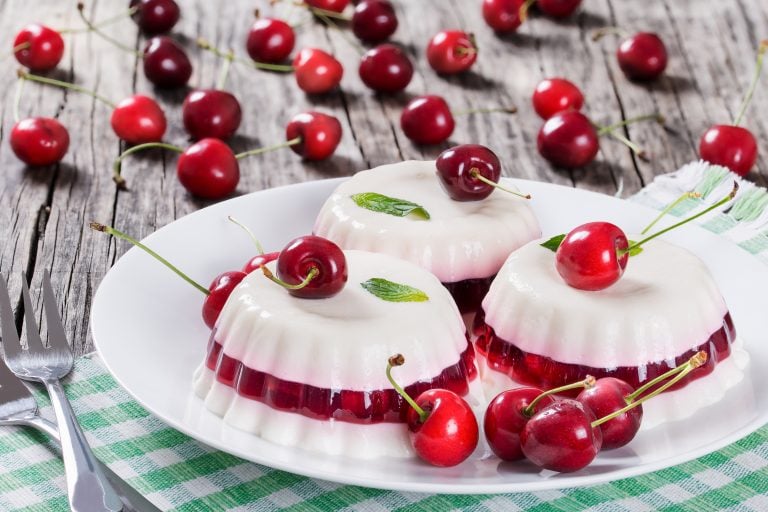
Puddings and gelatin
Soft, gelatinous, sometimes transparent and filled with fruit, chocolate-based, stuffed or topped with caramelised sugar: the tradition of puddings is wide and varied, and embraces many gastronomic cultures. A fundamental ingredient to prepare some types of puddings is gelatin. Originally, a bone broth was used, concentrated and cooled down, today instead thin dried sheets are common, to be soaked in water and added to the preparations. Gelatin began being used in cooking from the 2nd century AD., and became omnipresent in Renaissance cookbooks of the aristocratic classes since it was considered a luxury item. Over time puddings then transformed into products within everyone's reach, so much so that gelatin represented one of the main commodities to stock up on during the Napoleonic wars of the 19th century and during the Algerian war of 1830, because it is rich in proteins. To make it, in fact, animal collagen is needed, in particular that of connective tissues and bones of pigs, cattle and, in the past, also fish bones (it is known, in fact, also as "isinglass," (fish glue) due to of an ancient procedure originating in Russia, where gelatin was made with the swim bladder of sturgeon).
The 10 most famous puddings
There are many international puddings: here we gathered 10 of the most famous and popular. Perhaps not all technically fall into the category, but they are still sweet, soft but compact preparations (no liquid creams and no mousses).
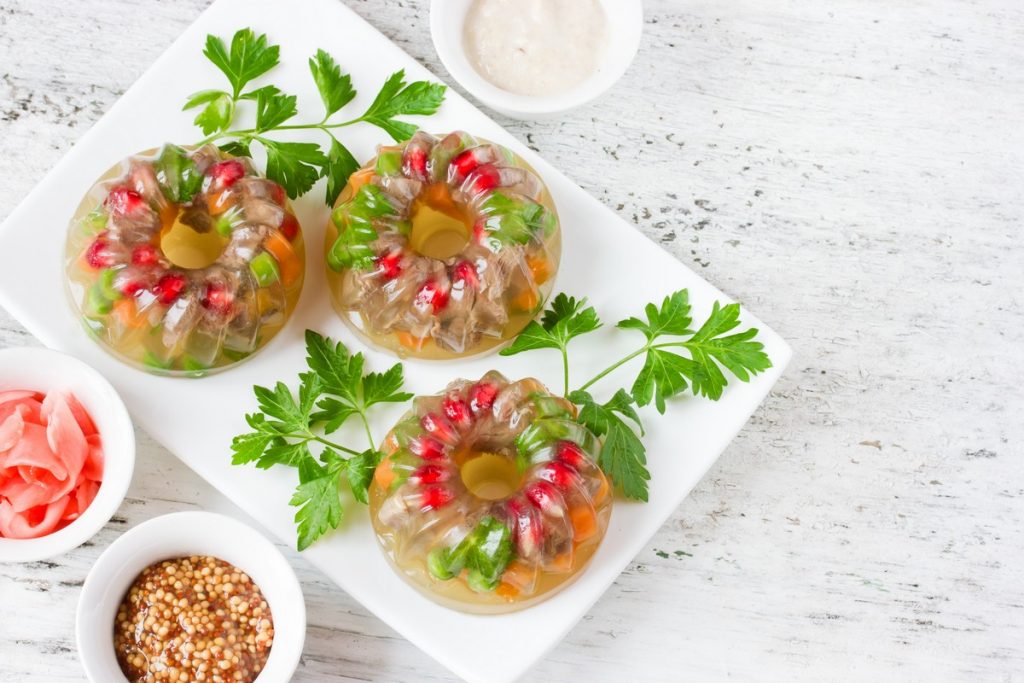
Aspic
The term indicates a cold dish consisting of meat, fish or vegetables enclosed in a gelatin casing, which in French means "asp" (the name is probably linked to the shape of the moulds of the past, reminiscent of a coiled snake). The official inventor of the recipe is Napoleon's chef, Marie-Antoine Carême, who counts it among the chaud-froids (literally “hot-cold”), preparations cooked hot but served cold. Spectacular and eye-catching, aspic was one of the cult dishes of the 1980s and early 1990s, often in a sweet fruit variant. Preparing it is simple, you just need to have a little patience and wait for the gelatin to set: the strong point of the dish is the transparency that allows you to see the ingredients floating inside and thus create colourful and original effects.
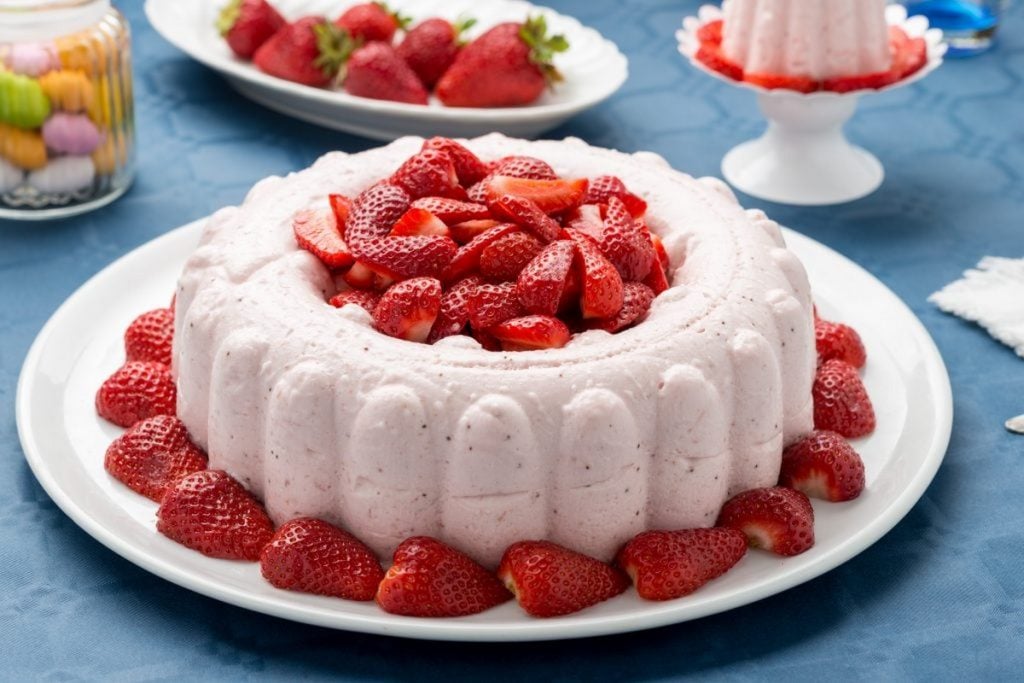
Bavarois
Do not be misled by the name: the Bavarois pudding was not born in Germany but rather in 19nth-century France, from where it spread to other countries thanks to the skill and fame of pastry chefs. A rich dessert made with milk, sugar, eggs, fresh cream and gelatin, inspired by crème anglaise - a preparation with very similar ingredients - but denser and more similar to a pudding. White in the classic version, it can also be made with chocolate, strawberries or other seasonal fruit.
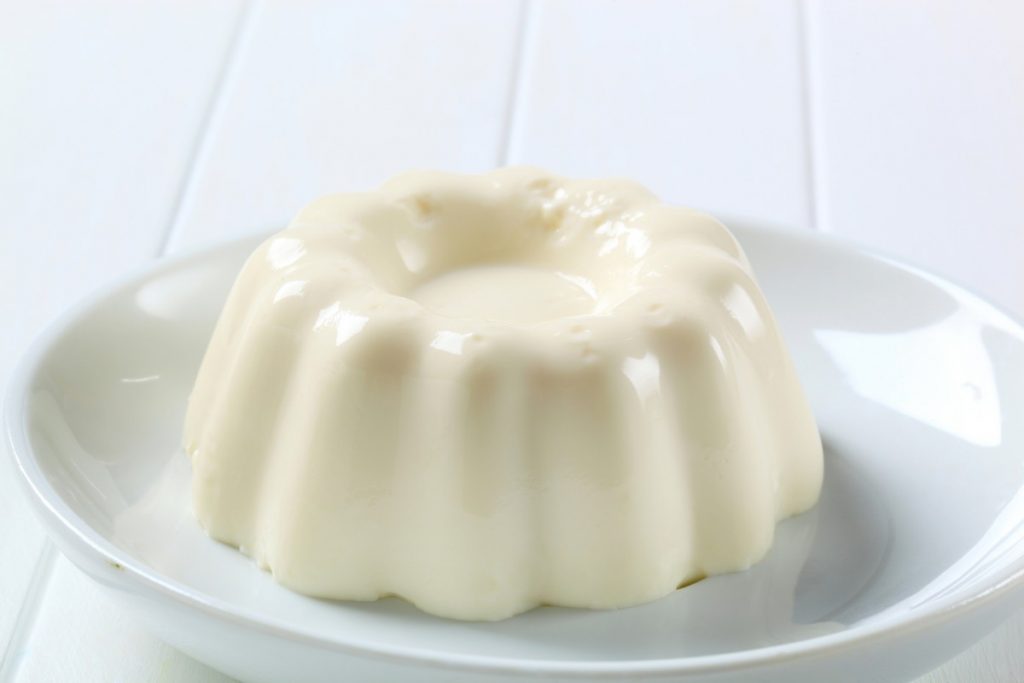
Blancmange
With this term today the thought goes immediately to dessert, but during the Middle Ages blancmange was simply a white dish, either sweet and salty, destined for the wealthiest classes. To prepare it, ingredients such as milk, almonds, rice, but also lard or chicken breast were needed. The plausible theory is that the recipe was born in France with the name of blanc manger, but today "Biancomangiare" is one of the prides of Italian cuisine, particularly linked to Sicily, Sardinia and the Valle d'Aosta. Pellegrino Artusi also talks about it, indicating the following doses: "Sweet almonds with three bitter ones, 150 grams. Powdered sugar, 150 grams. Isinglass in sheets, 20 grams. Cream, or whole milk, half a glass in good measure. Water, a glass and a half. Orange blossom water, two spoonfuls."
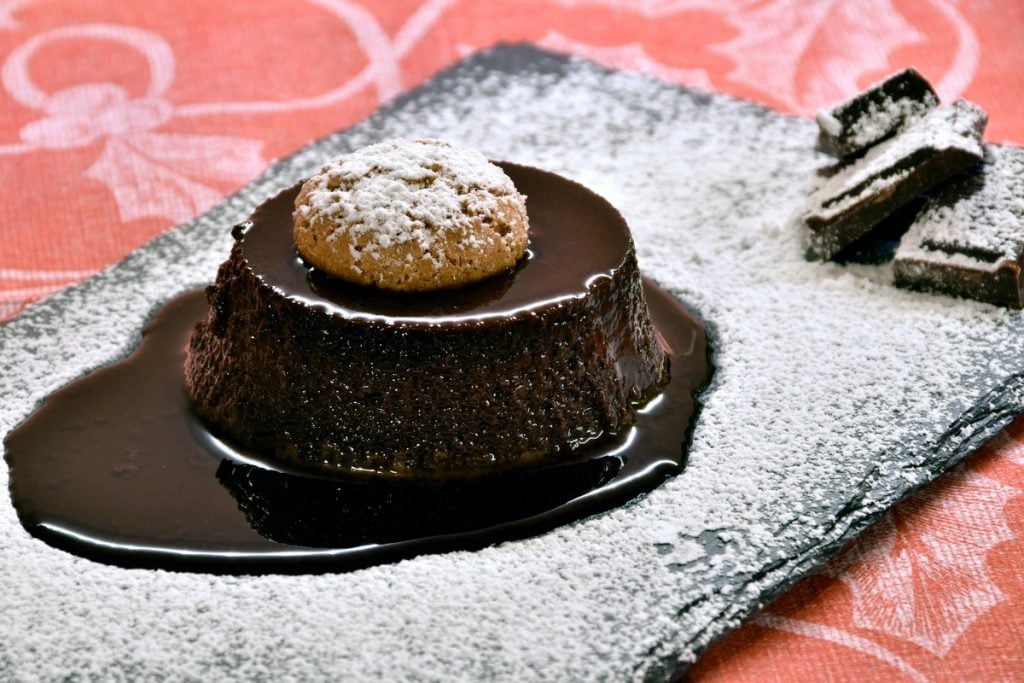
Bonèt
Piemontese confectionery is sumptuous and refined, and bonèt is no exception. A primordial version of this chocolate pudding was prepared (without cacao) in an area halfway between the Langhe and Monferrato already in the Middle Ages as a final course of the most sumptuous banquets. Milk, eggs, amaretti and sugar were the main ingredients at that time: it was only in the 18th century that bonèt began to be produced with chocolate, becoming the delicious dessert we all know. The name derives from the rounded hat that recalls the shape of the mould in which it was prepared, called "bonèt ed cusin," or "kitchen hat."
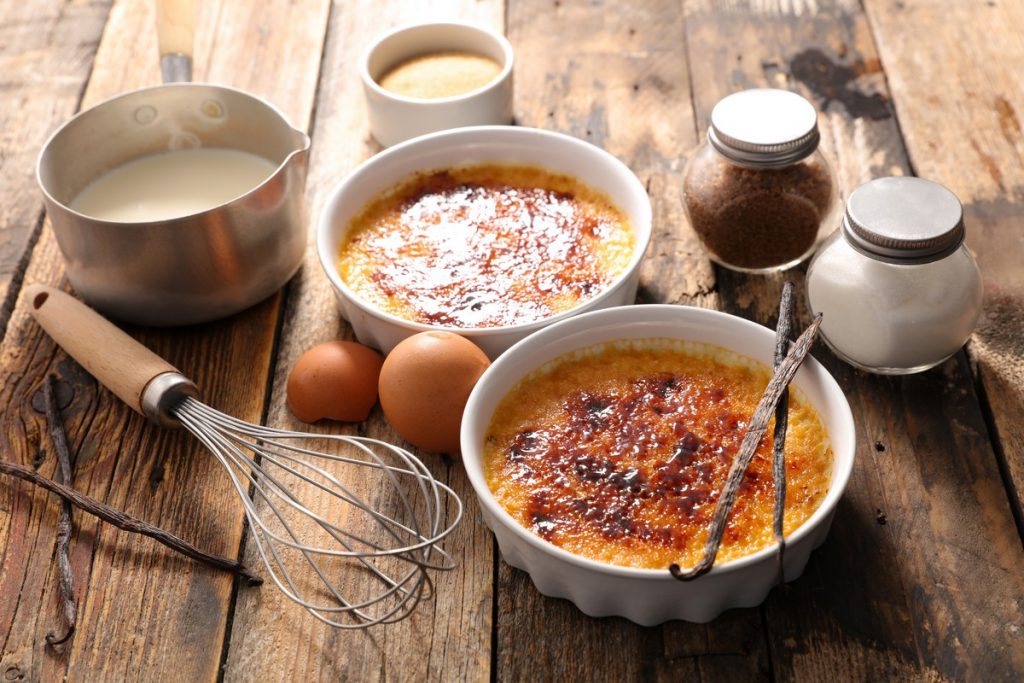
Crème brûlée
Perhaps not quite a pudding, but the consistency of this thick cream is very similar: the first recipe written in French cookbooks appeared in 1691 in the volume "Cuisinier royal et bourgeois" by chef François Massialot, which mentions a slightly different preparation with a caramelised disc added at the end on the surface. The success of the dessert - also consecrated by the film "Amélie" - over time has become increasingly international, starting with the United States, where it was even served by Thomas Jefferson at the White House. In the 1950s and 1960s it was a must in American cooking magazines and cookbooks, but the real claim to fame came after one of New York's most famous and refined restaurants, Le Cirque, included it on its menu. The burnt cream thus began to go around America, becoming a real trend, giving life to ice cream flavours, donuts, cupcakes and sweets of all kinds "crème brulée flavours." The strong point is its topping obtained by torching the sugar.
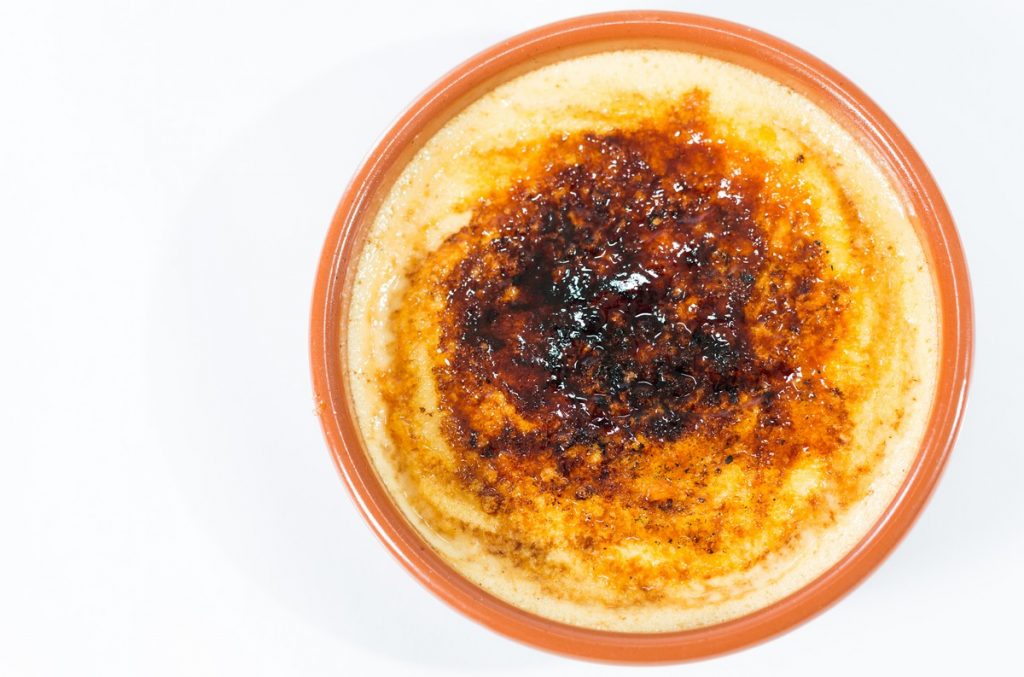
Catalan cream
Similar, but with a very different history, is the recipe for Spanish crème brulée. According to legend, it was the Catalan nuns who invented it on the occasion of the bishop's visit. Originally, it was supposed to be a pudding, but the result was too liquid and so they sprinkled hot caramelised sugar on the surface to disguise the mistake. Unlike the French preparation, the Catalan cream is characterised by the presence of cinnamon and is prepared with only milk, without adding cream. Finally, the Spanish dessert is cooked in a saucepan while the crème brulée is baked in the oven in bain-marie.
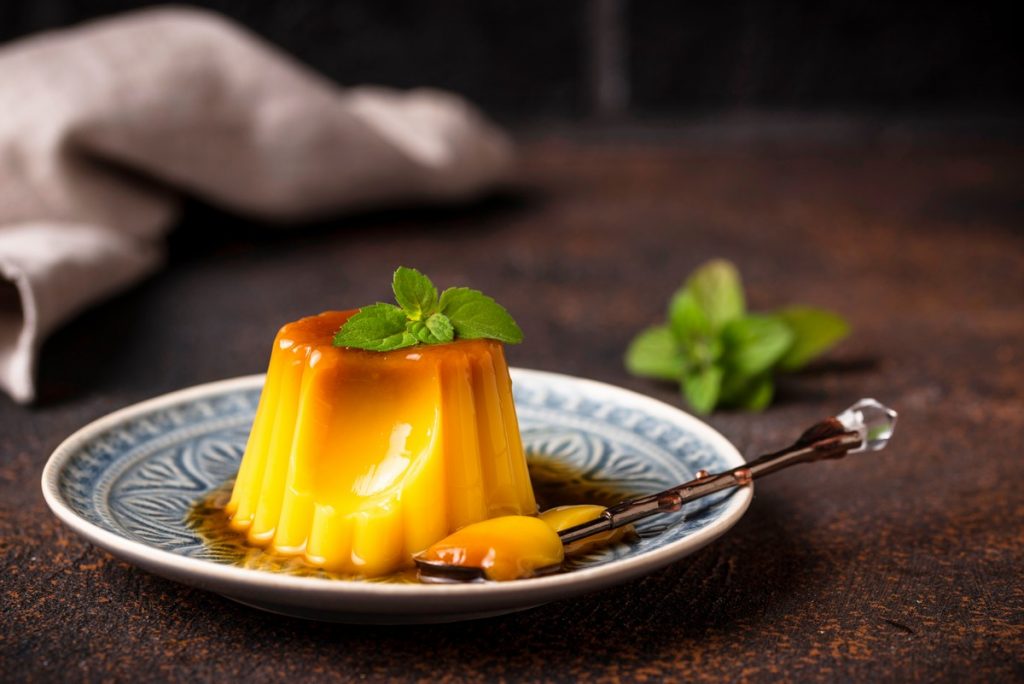
Crème caramel
Also in this case, there is no particular information about the origin of the dessert. Greeks and Romans already consumed sweets made with eggs and milk, with a dense and compact consistency. Tracing its exact origin, therefore, is not easy: the dishes have evolved over time according to local traditions and social changes, and never as in the case of crème caramel are opinions conflicting. Many believe it is a Portuguese specialty, but the French name is misleading: in any case, we are talking about a delicious dessert made with eggs, milk and sugar, without the use of gelatin or other thickeners. All covered with delicious caramel. The Bolognese cousin of this dessert is the fiordilatte bolognese, a preparation of ancient origins probably created to preserve milk and eggs before refrigeration. A recipe belonging, therefore, to the peasant culture, with ingredients and procedure almost identical to those of crème caramel.
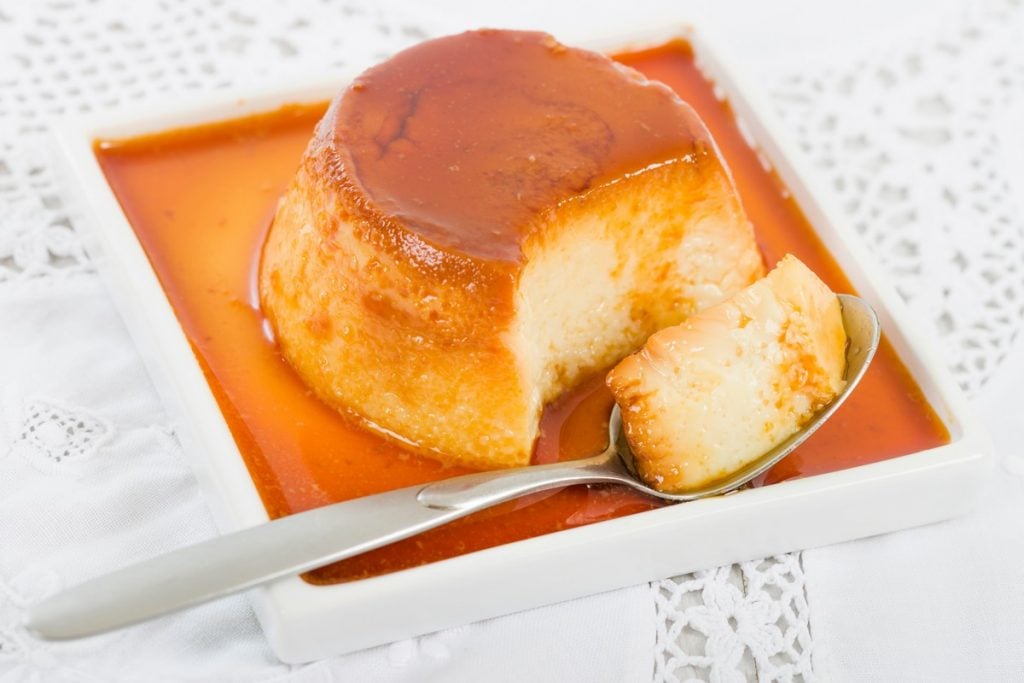
Flan
In the sweet or savoury version, French flans are versatile preparations suitable for any occasion. In pastry, they are usually made with milk, eggs and vanilla; while the savoury version offers more variations. Soft and compact, these flans are in fact ideal to serve at the end of a meal or, if made with vegetables or cheese, as a delicious appetiser. An even more delicious sweet evolution is the parisienne flan, a shell of fragrant puff pastry that contains a mixture of milk and eggs, baked in the oven until set.
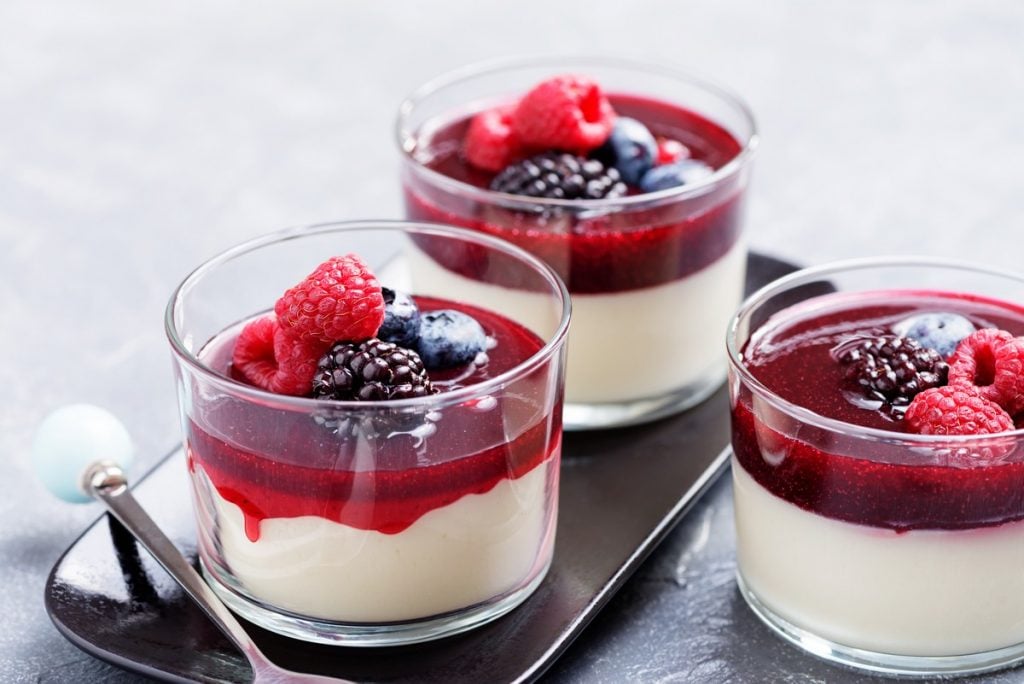
Panna cotta
Another symbol of the 1980's cuisine, the perfect end to a meal after dinner at the pizzeria, panna cotta is one of the most popular desserts in Italy. Delicious and snow white, it can be enjoyed as is, or topped with syrups, icing, fruit or chocolate. There are not many sources about its birth, but it is a traditional Piemontese dessert, according to folk tales born in the early 20th century thanks to a Hungarian lady living in the Langhe. We had to wait until the 1960s before chef Ettore Songia put the recipe on paper for the first time. History and anecdotes aside, panna cotta is a simple amateur-proof dessert: quick and practical, it can be added with different ingredients according to personal taste, served in a large mould sliced to portion, or in many small single servings.
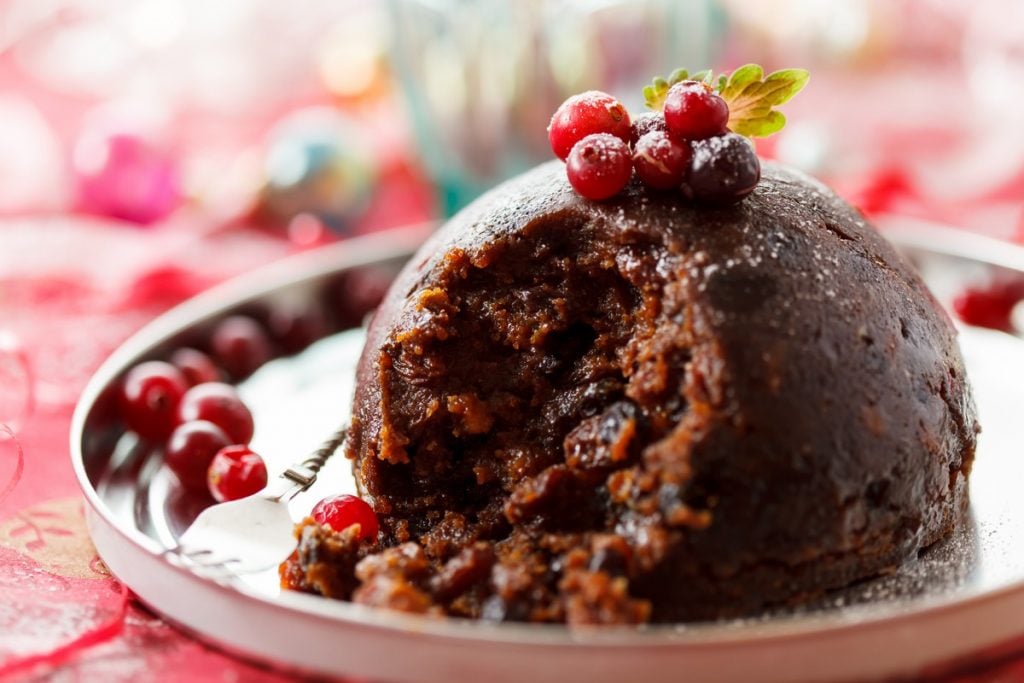
Pudding
With the generic term pudding refers to many preparations: bread pies and cream, or softer and more gelatinous puddings. The first appearance of the recipe in European literature dates back to 800 BC. with Homer's Odyssey, but according to historians of British gastronomy, the dish has always been part of the diet of the British. In the Middle Ages, when the banquets became more sumptuous, puddings began to be very common among the noble tables, so much that in 1407 for the inaugural dinner of Bishop Clifford a castle-shaped jelly was prepared, with a devil and a priest at the centre of a moat made of cream. Puddings continued to be known throughout the country, and in particular the sweet ones landed on the tables of the lord of the fief.
The recipe for aspic with berries
Ingredients
350 g assorted wild berries
100 g sugar
150 g Port
350 g water
6 g gelatin in sheets
1 vanilla pod
Lemon peel
Soak the gelatin in cold water. Mix the sugar in a small saucepan with 300 grams of water, two lemon peels and the vanilla pod divided in two lengthwise. Boil for a few minutes then remove the syrup from the heat, add the well-wrung out gelatin and stir until completely dissolved and evenly mixed. Let it cool then strain the syrup and add the Port. Fill 4 small moulds with berries and pour in the cold but still liquid mixture. Let it set in the refrigerator for at least 6 hours. When ready to serve, dip the moulds for a moment in boiling water, dry them and turn them over onto dessert plates. You can complete the presentation with a scoop of gelato.
by Michela Becchi

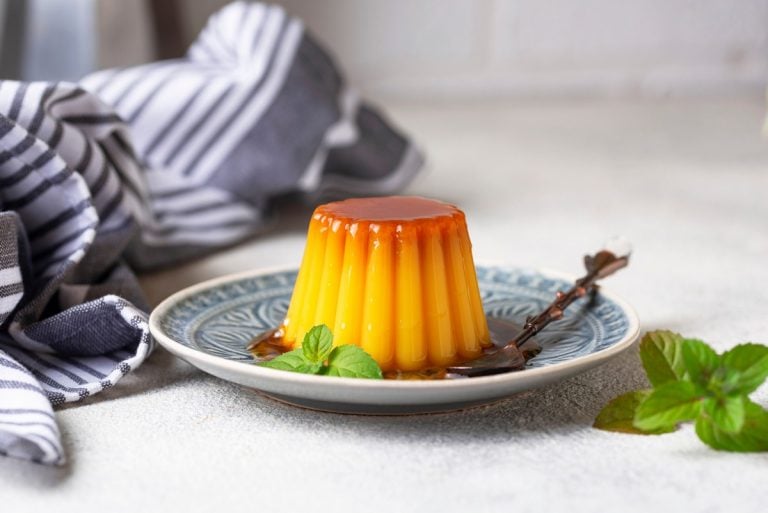
 What changes for the export of Italian wines to China under the new regulations?
What changes for the export of Italian wines to China under the new regulations? “Forget dealcoholised wines. The future is Komb(w)ine.” Moser and Ravizza present a new grape must-based product
“Forget dealcoholised wines. The future is Komb(w)ine.” Moser and Ravizza present a new grape must-based product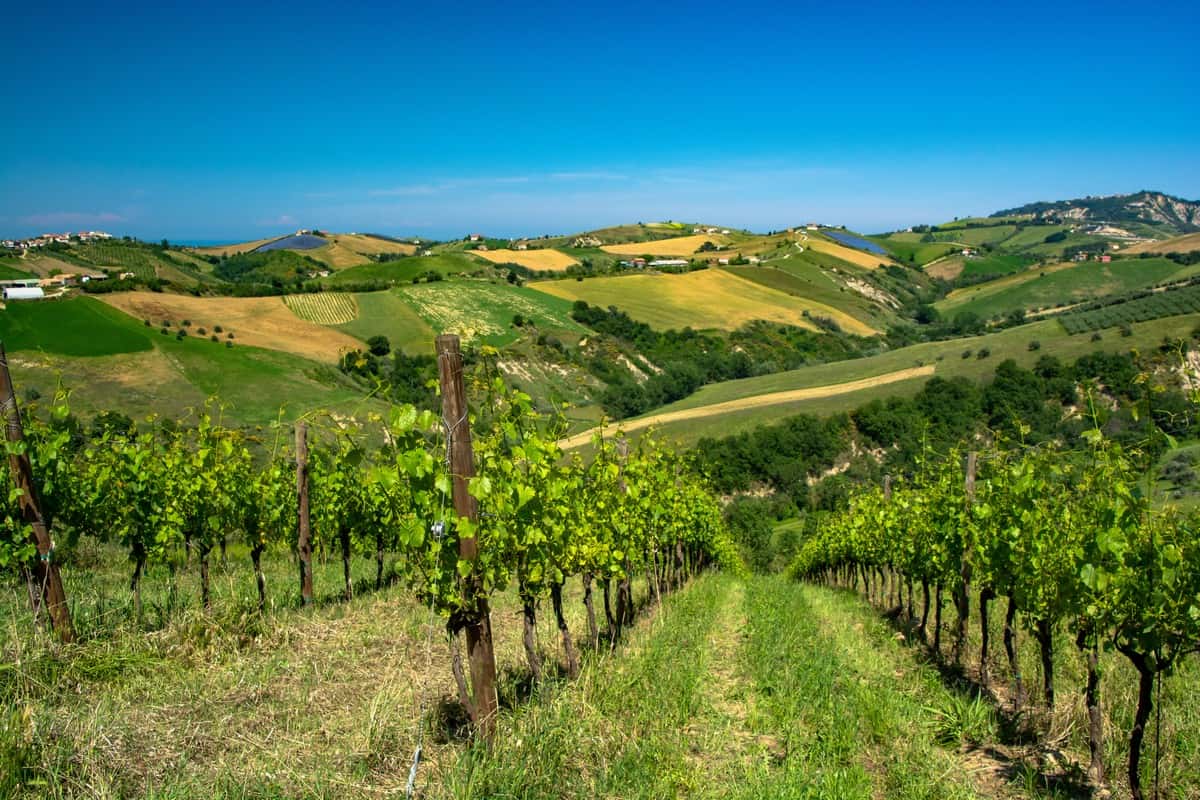 Global wine consumption at a historic low and vineyards in decline. The OIV report outlines a 2024 to forget
Global wine consumption at a historic low and vineyards in decline. The OIV report outlines a 2024 to forget Oenologist Riccardo Cotarella will also produce dealcoholised wine: "My first bottle will be out in October and it won’t be bad"
Oenologist Riccardo Cotarella will also produce dealcoholised wine: "My first bottle will be out in October and it won’t be bad" Dear natural wine world, enough with the constant polemics. If you don’t want to self-ghettoise, self-criticism is needed
Dear natural wine world, enough with the constant polemics. If you don’t want to self-ghettoise, self-criticism is needed






